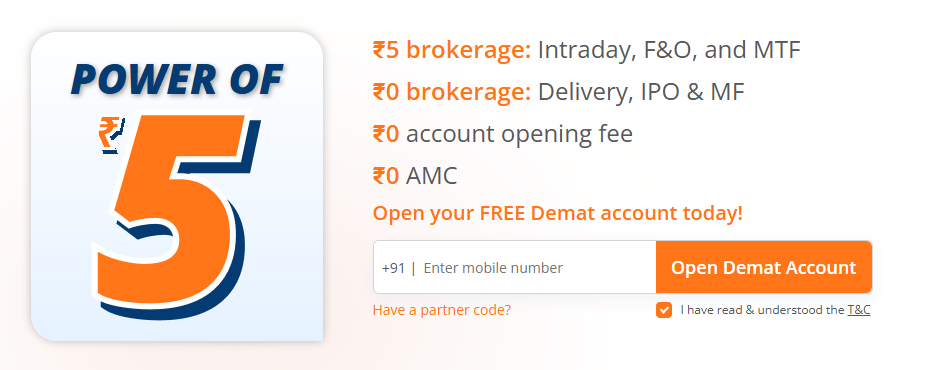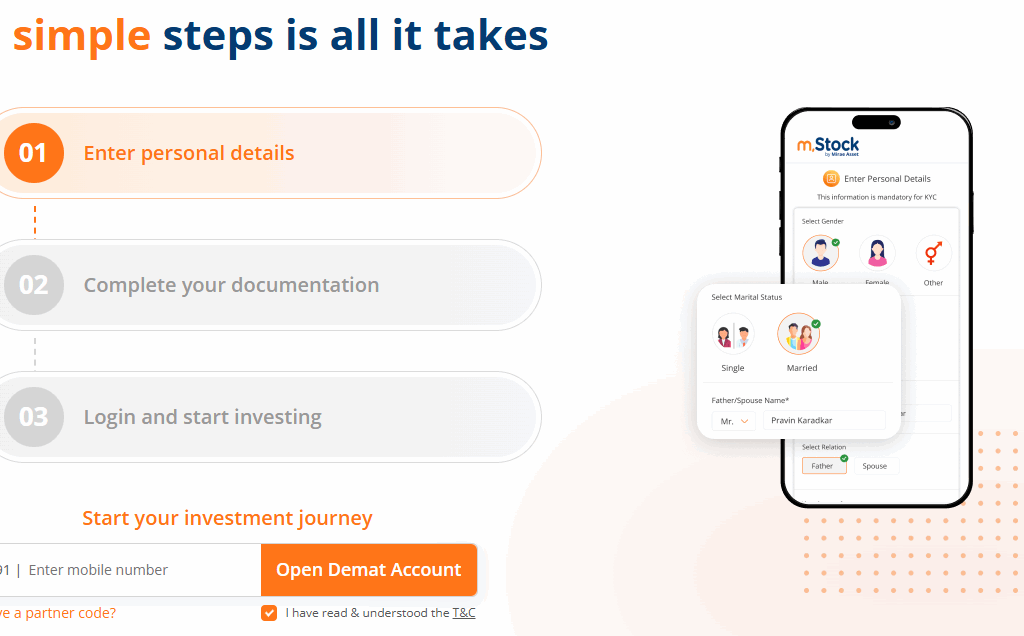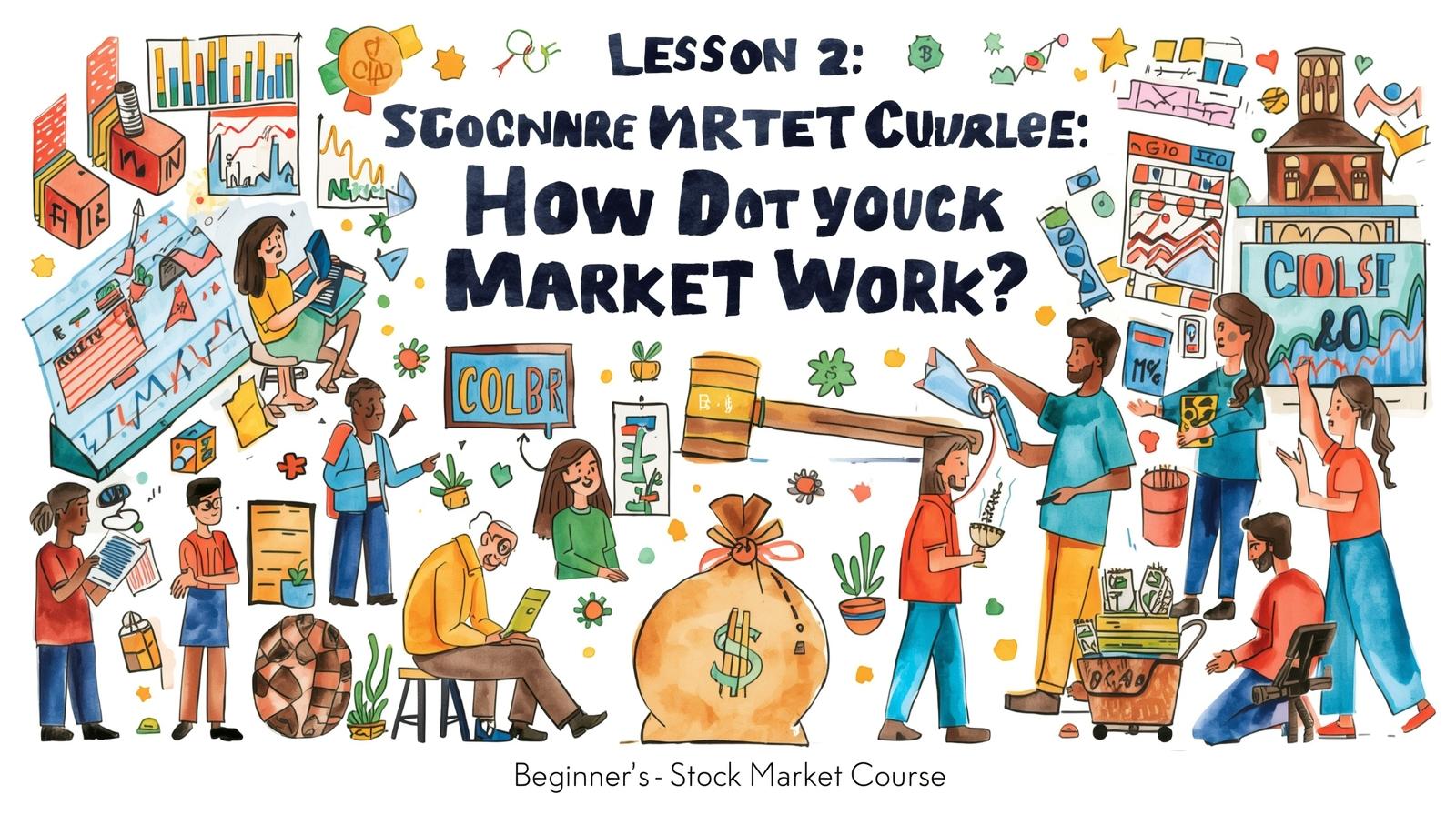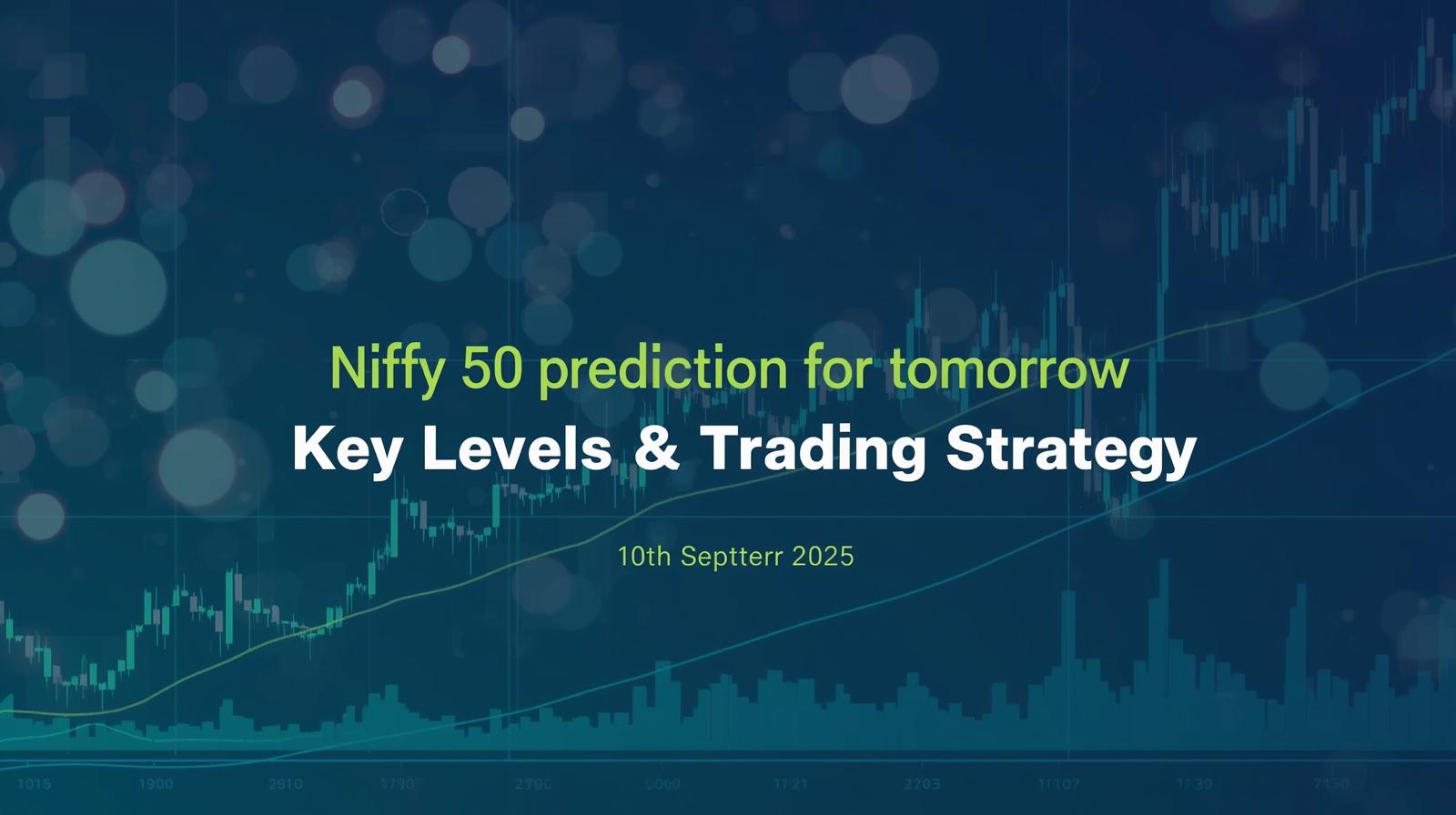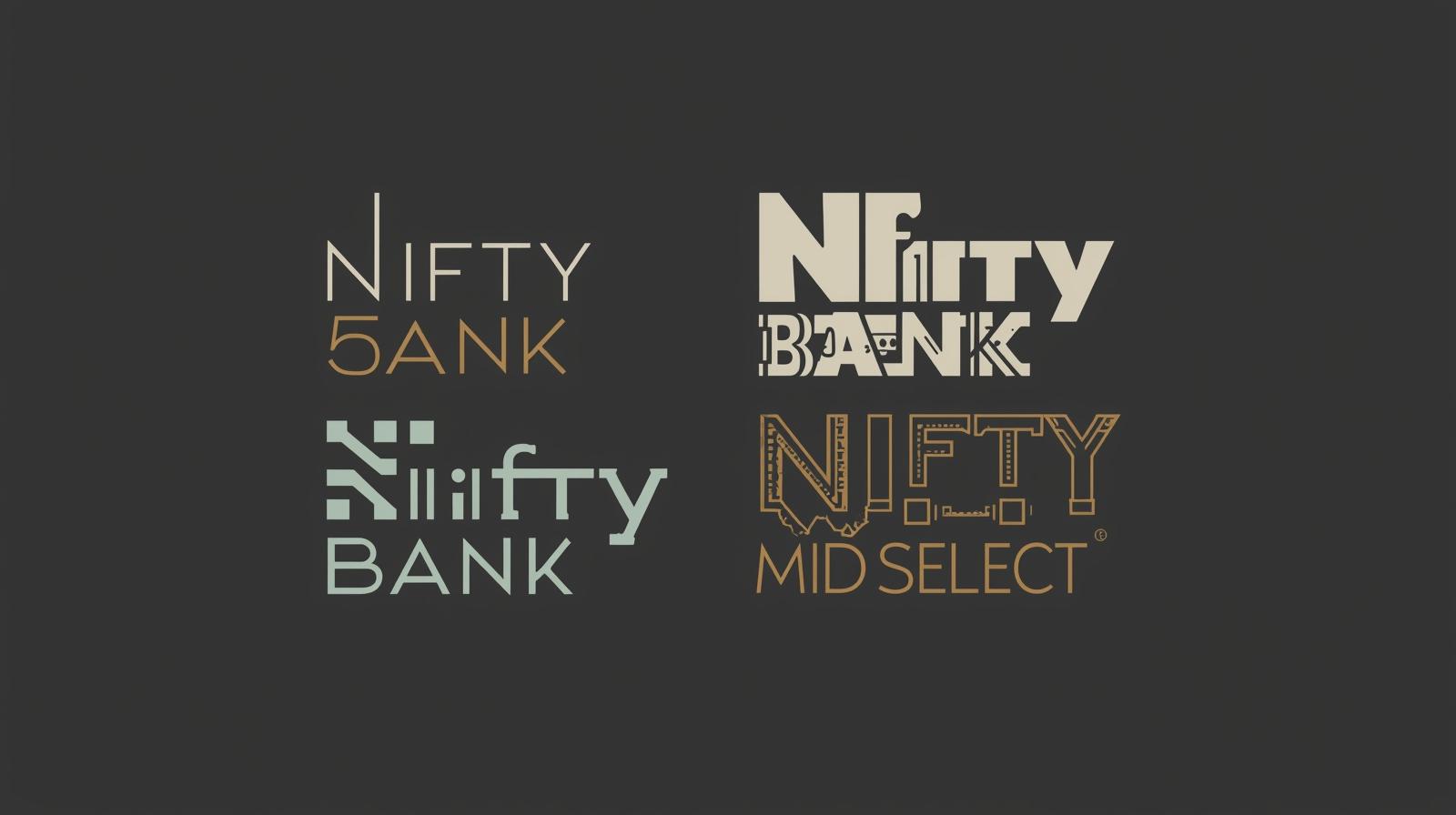🔄 Quick Recap – Lesson 1: What is a Stock Market?
In Lesson 1, we discovered that the stock market is not just about flashing numbers and fancy suits on TV. It’s simply a place where businesses and investors meet.
Think of it as a giant supermarket 🛒.
- Companies are like brands, putting their “products” (shares) on shelves.
- Investors are like shoppers, picking what they want.
- The exchange is like the cash counter, ensuring smooth transactions.
We also broke a big myth ❌ — that stock market is gambling.
Instead, it’s a platform for long-term wealth creation if you know the rules.
👉 If you missed Lesson 1, go back and try the activity of tracking one stock daily. It’s the first step toward “market observation,” a skill every investor must build.
📘 Lesson 2: How Does the Stock Market Work?
Now that we know what the market is, let’s explore how it functions.
Imagine you walk into a big noisy auction hall 🎤.
- On one side, buyers are shouting prices: “I’ll buy at ₹100!”
- On the other, sellers are shouting back: “I’ll sell at ₹102!”
- In the middle, the auctioneer (stock exchange) matches the deals.
That’s the stock market.
Except here, the shouting is replaced by computers, algorithms, and real-time data moving faster than you can blink. ⚡
🔑 Step 1: The Key Players
Let’s break down the market’s main characters 👇
- Investors (Long-Term) 🕰️
- Buy and hold shares for years.
- Example: Someone who bought Infosys in 1995 and still holds it.
- Traders (Short-Term) ⏱️
- Buy today, sell tomorrow or within minutes.
- Example: Buying Reliance at 10 AM, selling at 2 PM.
- Companies 🏢
- They list shares on exchanges to raise money.
- Think of it as: instead of taking a bank loan, they invite the public to be “co-owners.”
- Exchanges (NSE, BSE) 📊
- Platforms where all trades happen.
- Like Amazon, but instead of goods, you buy stocks.
- Regulator (SEBI) ⚖️
- Think of SEBI as the referee in a cricket match.
- Ensures nobody cheats, manipulates, or breaks rules.
🔑 Step 2: How Buying & Selling Happens
Let’s take a real-life story:
👉 You decide to buy 10 shares of HDFC Bank at ₹1,600.
👉 At the same time, a seller wants to sell 10 shares of HDFC Bank at ₹1,600.
👉 The exchange instantly matches you both. ✅
If no seller is ready at ₹1,600 but someone is selling at ₹1,602, you have 2 choices:
- Wait (maybe someone comes at ₹1,600).
- Or agree to buy at ₹1,602.
This process is called order matching, and it happens in microseconds.
🔑 Step 3: Why Do Prices Change Every Second?
Prices don’t move randomly. They move because of demand & supply.
💡 Example: Imagine there’s a new iPhone launch. Everyone rushes to buy, but supply is limited → prices go up.
Stock prices work the same way.
- If more buyers want Tata Motors → price rises ⬆️.
- If more sellers want to exit Tata Motors → price falls ⬇️.
And what drives demand & supply?
👉 Company results, global news, government policies, investor emotions, even rumors!
🔑 Step 4: Stock Indices
Have you ever noticed news anchors shouting:
- “Sensex up 500 points!”
- “Nifty crashes 200 points!”
Indices like Nifty 50 or Sensex are like the report card of the market.
- If Nifty rises → Most top companies are doing well.
- If it falls → Sentiment is weak.
Think of indices as the temperature reading of the economy 🌡️.
🎭 Story Time: Market in Action
Let’s say Infosys announces better-than-expected profits:
- Investors get excited → demand rises.
- Price of Infosys shoots up.
- Because Infosys is part of Nifty → Nifty also rises.
- Media headlines: “Markets cheer Infosys results!” 🎉
Next day, if global markets fall (say US market crashes), panic spreads, investors start selling → Infosys and Nifty both fall.
👉 Moral: Market is an emotional roller coaster 🎢 driven by both logic and fear.
📝 Practical Activity
🔥 Activity for Today:
- Open NSE’s website or your trading app.
- Pick any stock (say HDFC Bank).
- Look at Buy Orders (Bid) and Sell Orders (Ask) in the order book.
- Notice how the prices keep moving as new buyers/sellers enter.
Spend 10 minutes watching the live market — this experience will teach you more than 100 pages of theory.
🎯 Key Takeaways from Lesson 2
✔️ Stock market is like a giant auction house.
✔️ Exchanges match buyers & sellers instantly.
✔️ Prices move because of demand & supply (driven by news & emotions).
✔️ Indices are the pulse of the market.
Course Introduction
🌟 Coming Up in Lesson 3
👉 “Who Are the Market Participants – Are You Competing Against Big Players?”
We’ll uncover how big institutions, FIIs, DIIs, and retail investors interact — and why understanding them gives you an edge.
Stay tuned for next weekend — it’s going to be exciting 🚀
Open Demat Account
by Mirae Asset (m,Stock)
